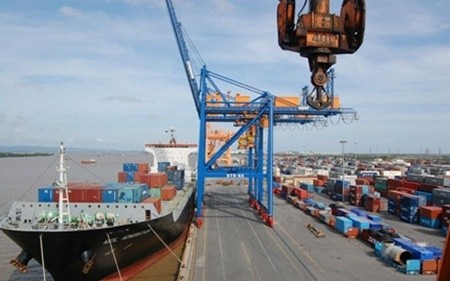(VOVworld) – The ASEAN Economic Community is expected to be established by the end of next year to create a single regional market. The move will be a turning point bringing benefits for ASEAN businesses including Vietnam.
ASEAN members have recently been actively preparing for setting up the economic community, AEC, scheduled for next year. The establishment will mark a full regional integration of Southeast Asian economies toward a single economic, security, and production base.

Export turnover to ASEAN in 2013 stood at 18.5 billion USD, a year-on-year increase of nearly 7%(Photo gdt)
|
Under the AEC, the 10 ASEAN economies will be merged in all fields – production, trade, and investment – to develop a common market for an area with 600 million people generating an annual GDP of about 2 trillion USD. This promises to be a big opportunity for Vietnamese enterprises, especially major companies, who have outlined plans to participate in the AEC while smaller businesses can learn how to access the bigger market.
Nguyen Cong Danh in charge of export and import at the Material and Complete Equipment Export-Import Corporation said: “Vietnamese businesses have their main advantages in the area of agricultural produce while a number of others still face lots of difficulties. Our company, which specializes in exporting motorbikes has to compete severely with products from Thailand and China with their extremely low prices and beautiful designs. In order to penetrate this market, we have defined pricing and high quality as keys to our success.”
Doctor Nguyen Duc Thanh, the Director of the Vietnam Center for Economics and Policy Research, said Vietnamese enterprises should be more proactive in finding ways to develop. Thanh said: “Vietnam has a favorable position in linking ASEAN and Northeastern Asia. With the AEC, barriers in trade and investment will be reduced, making cooperation between areas easier. But the production and exports of Vietnamese businesses should be more professional. Vietnam needs more high-value products characterized by its advantages.”
Tran Thanh Hai, Deputy Director of Export-Import Department of the Ministry of Industry and Trade, said Vietnamese enterprises also need to confront challenges when they join the AEC. In particular if they want to enjoy tax incentives in accordance with the ASEAN Trade in Goods Agreement (ATIGA), they should ensure the bloc’s regulations on origin of products. Hai noted: “although the tax rate will be reduced, there remain other barriers, including origin regulations. It means unless the localization rate of products reaches at least 40%, the product can enjoy tax incentives. Our domestic companies should pay more attention to other trade barriers such as anti-subsidy and anti-dumping.”
Vietnamese businesses need more careful preparation in terms of product, packaging, design, product specification, and methods to penetrate the market on top of human resources specializing in market development. Moreover, the process to develop the AEC market should strictly follow the needs of consumers in every ASEAN member country.